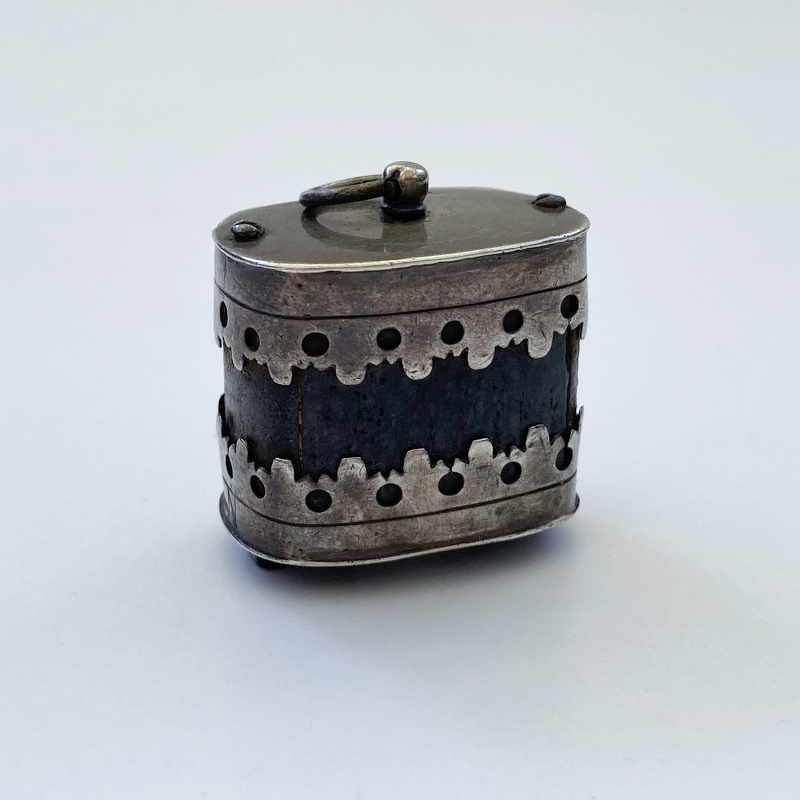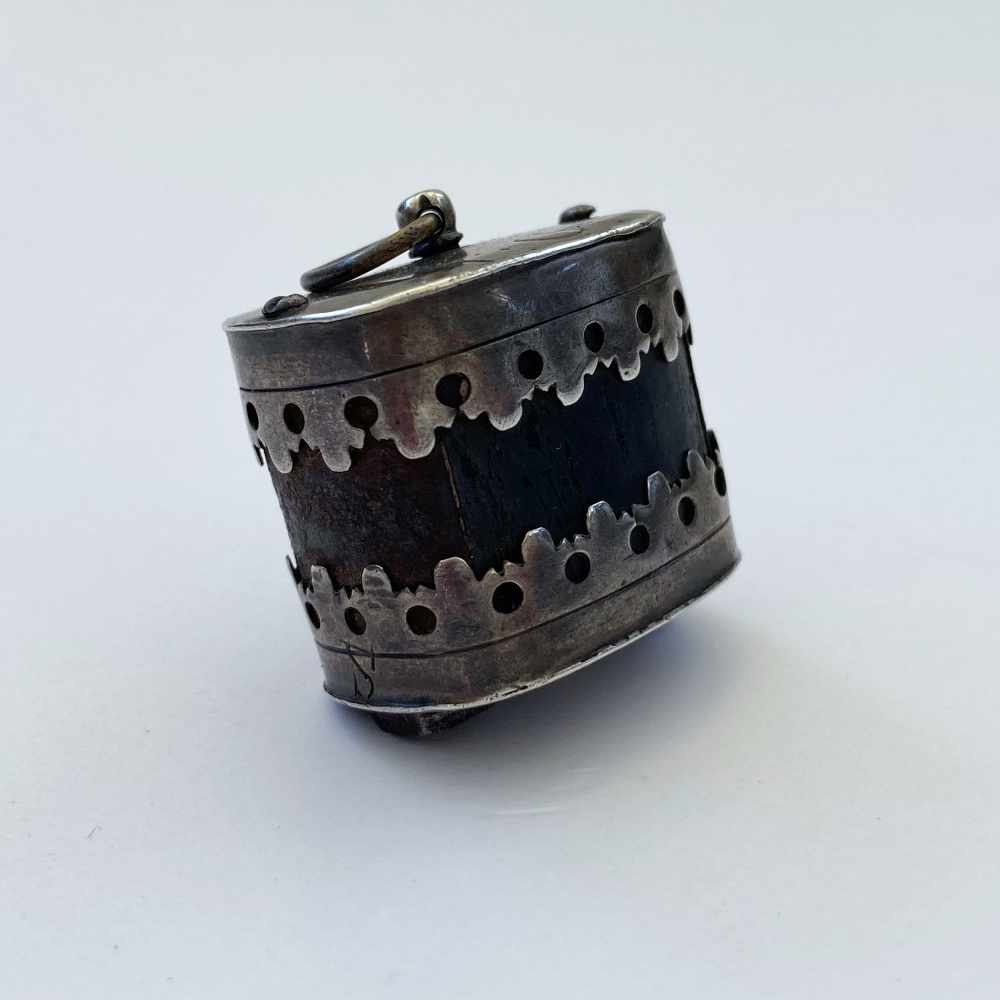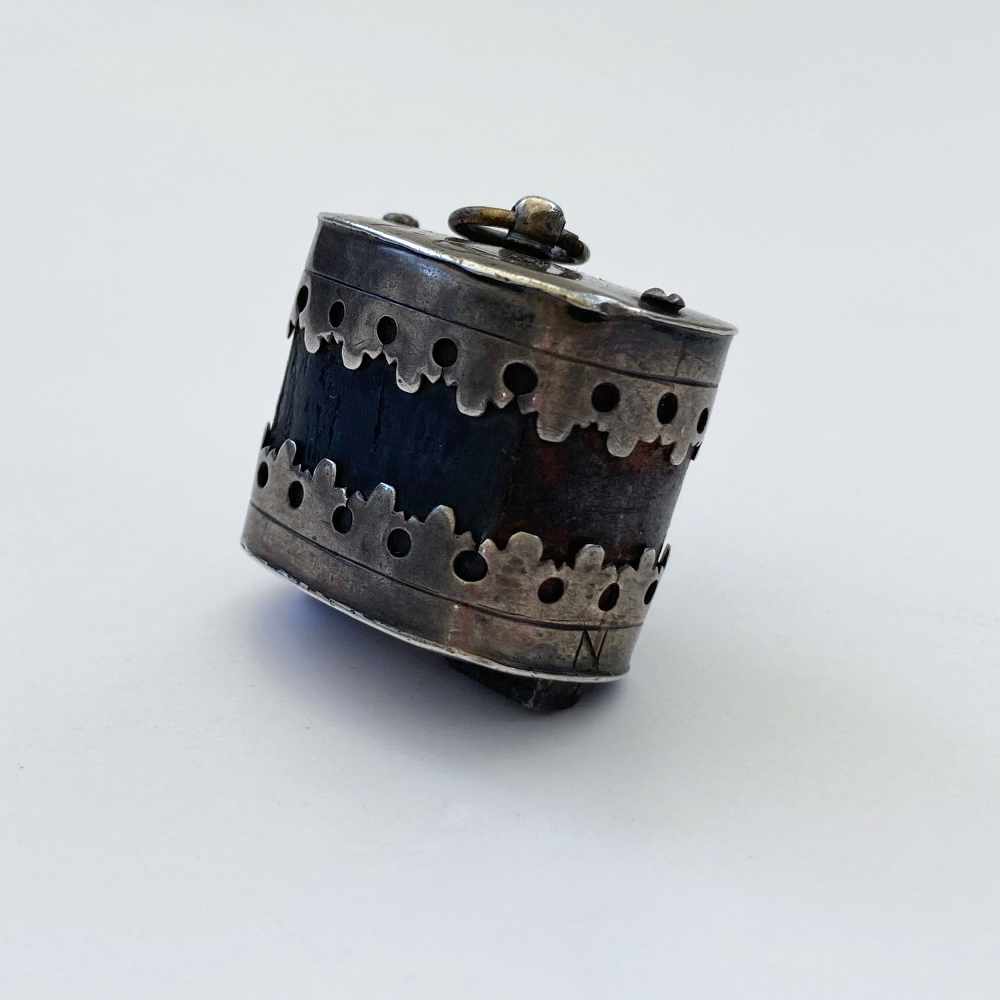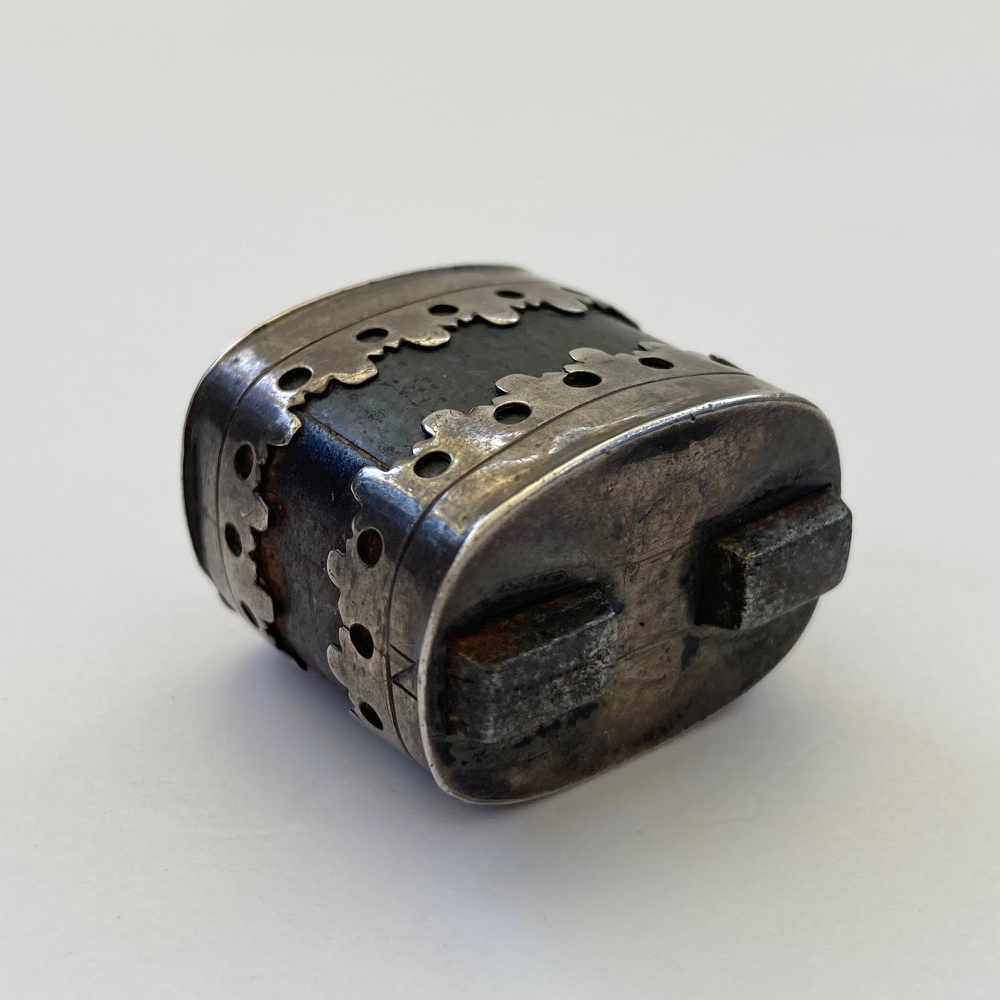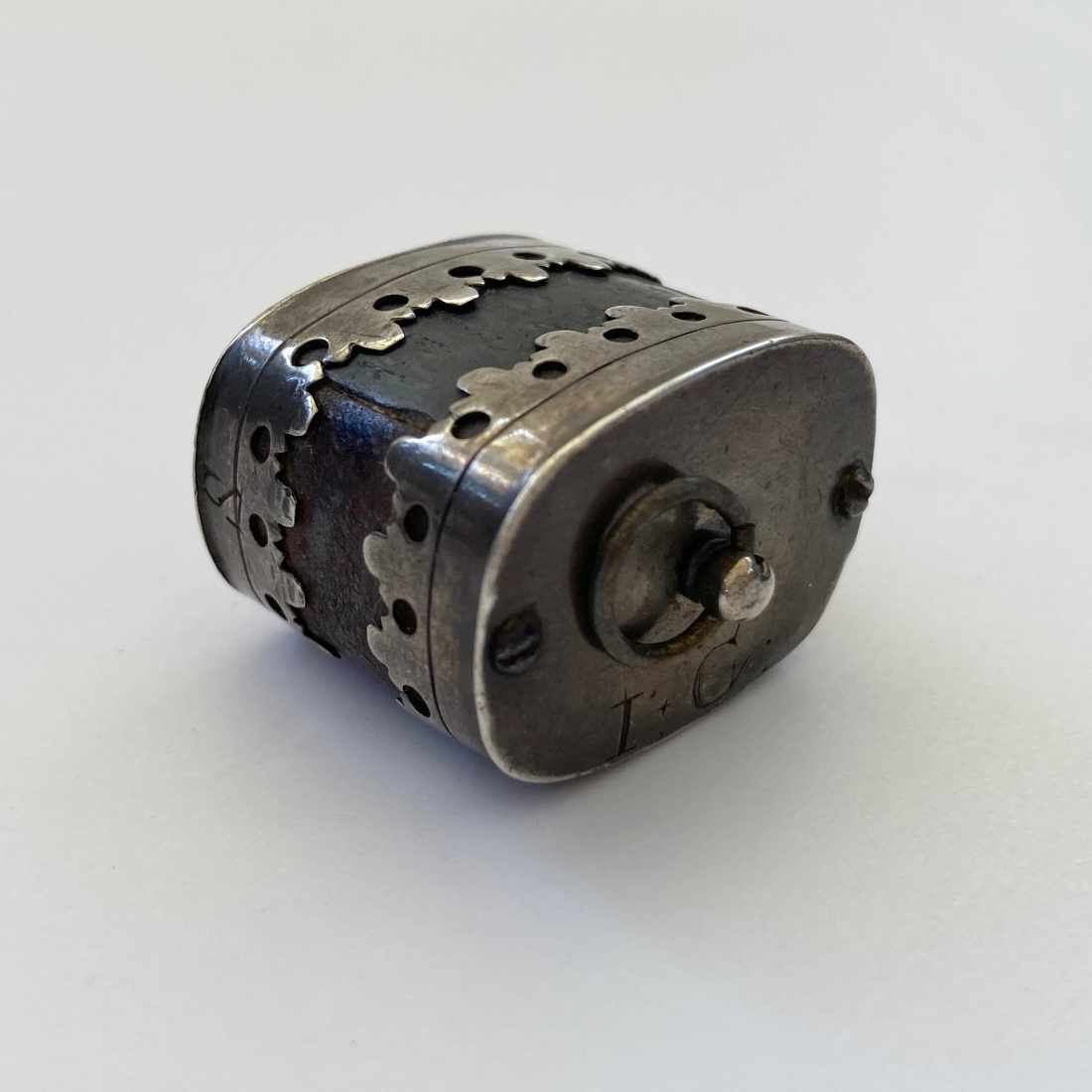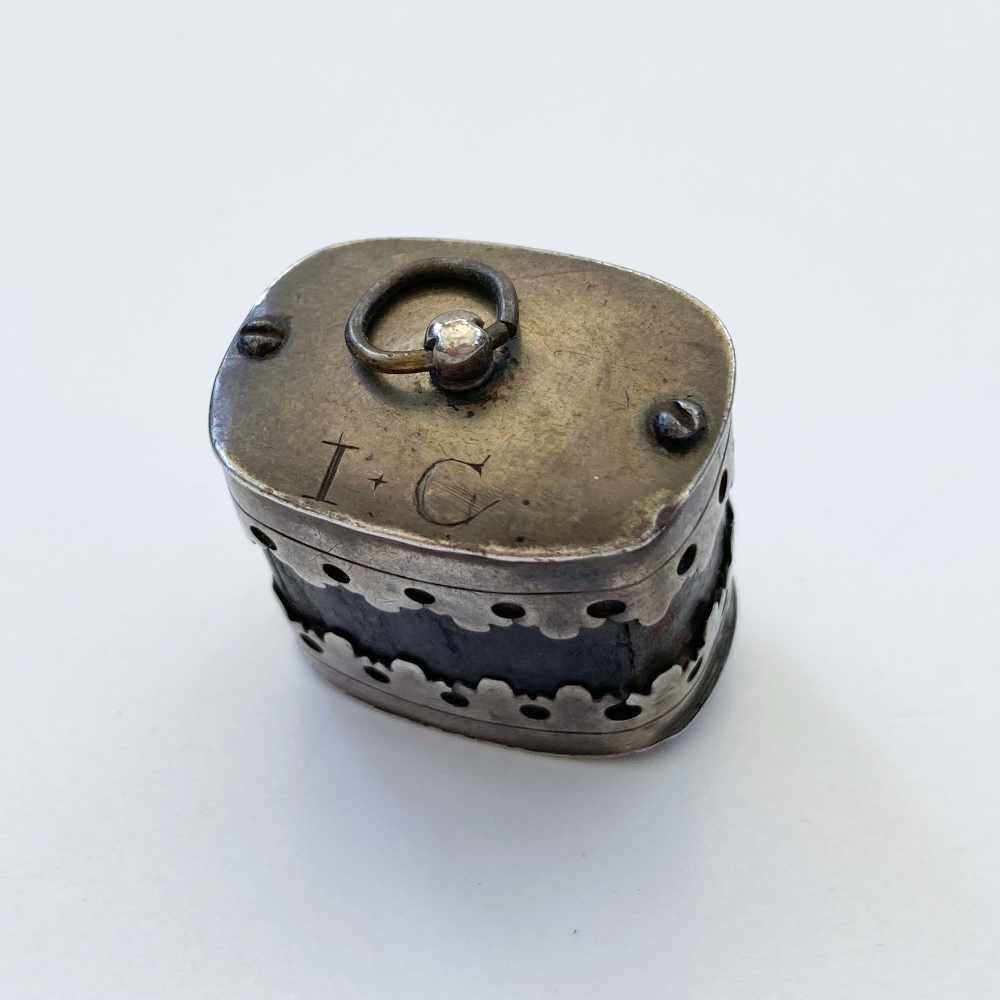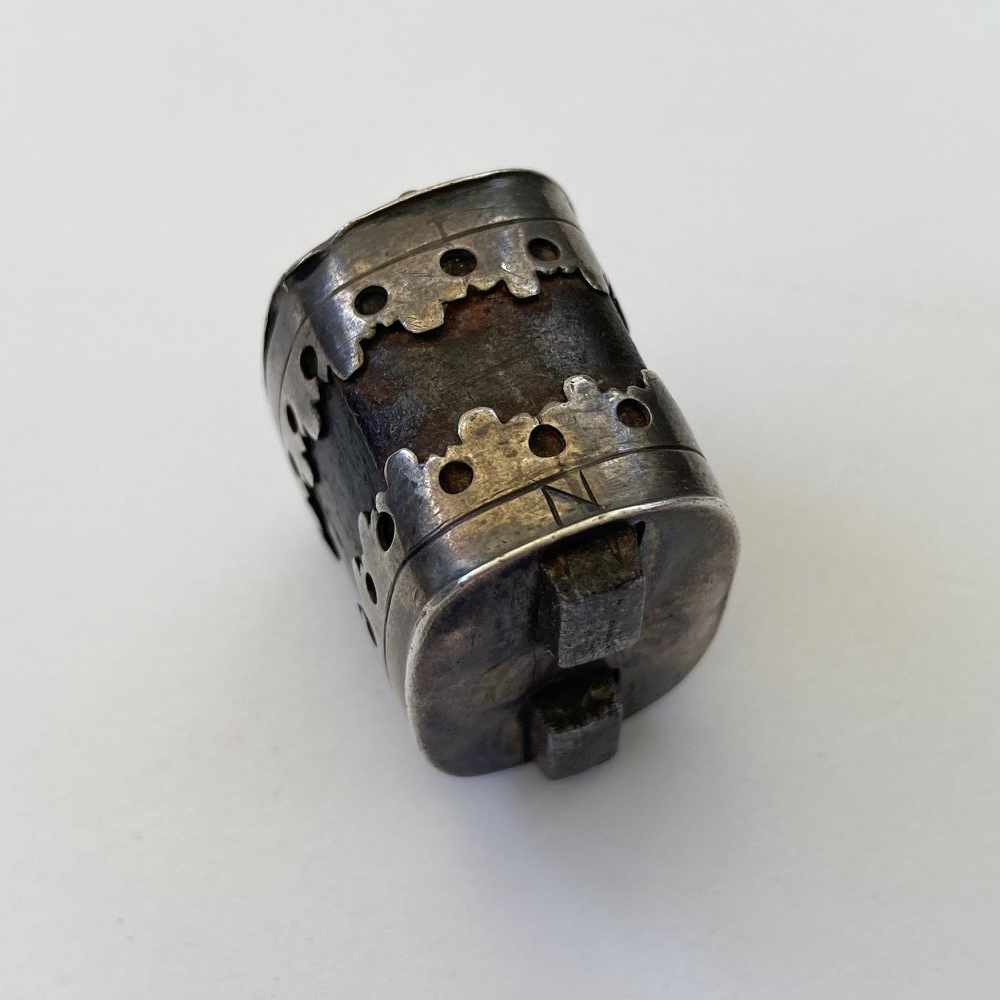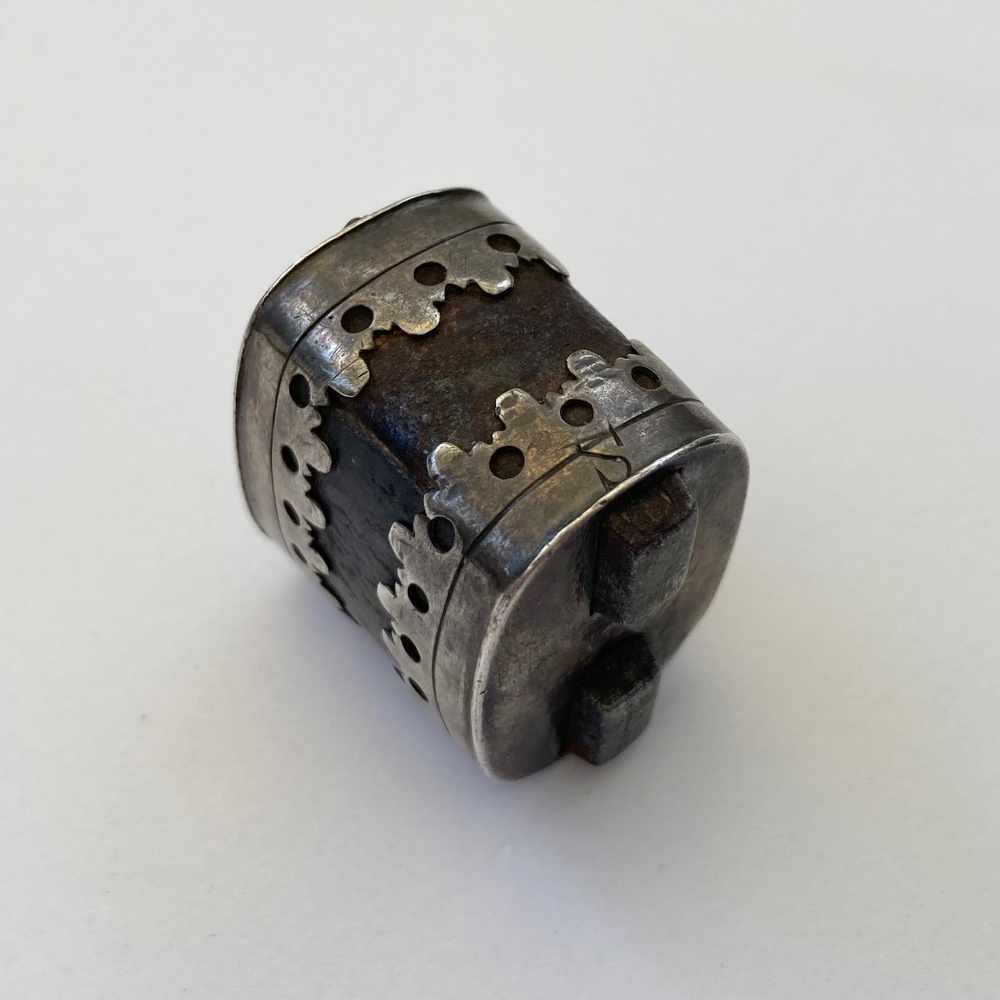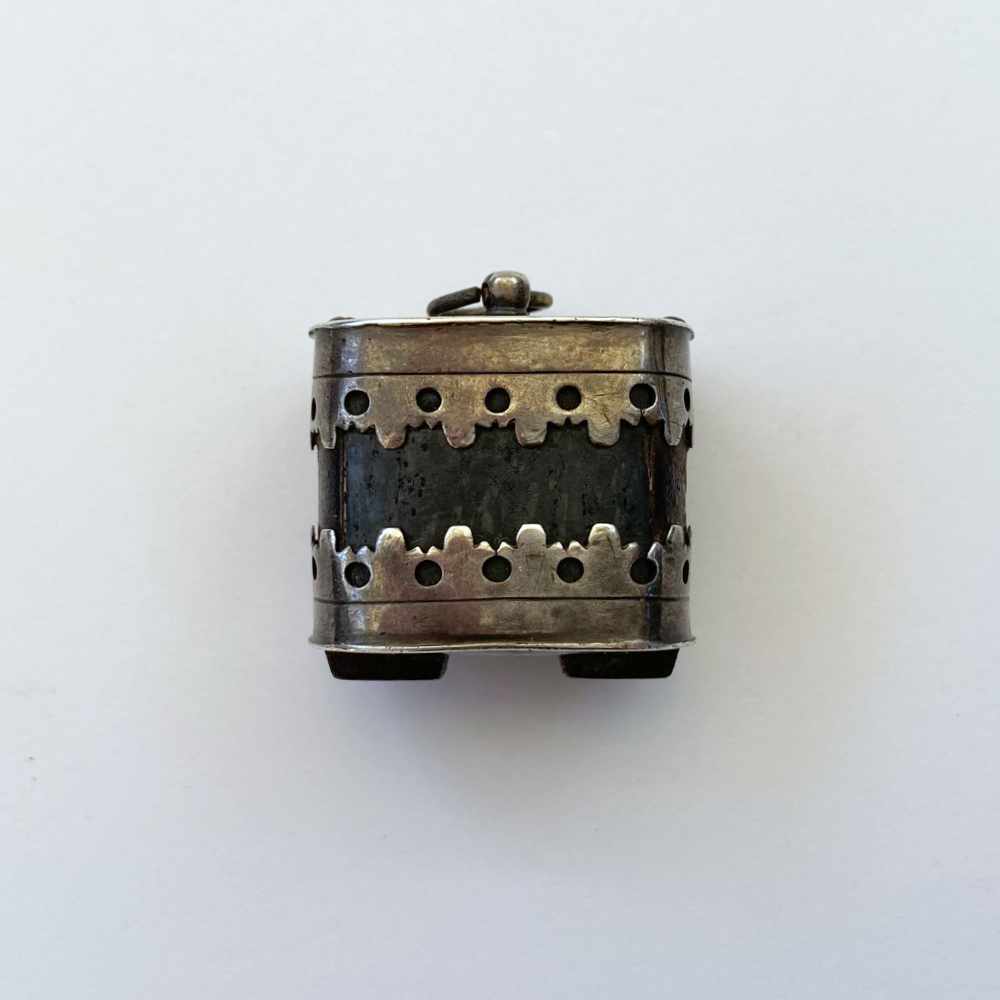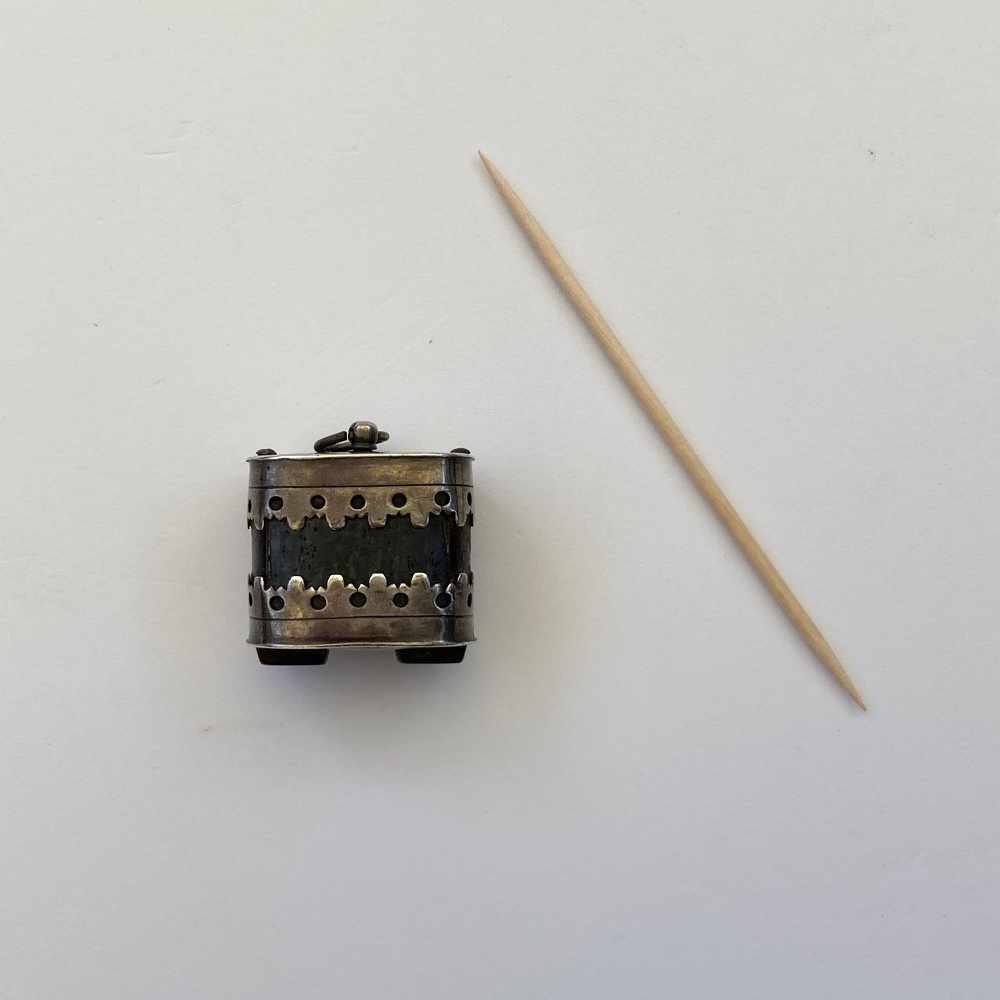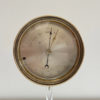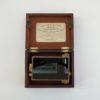Mid-Seventeenth Century Silver Mounted Mariners Lodestone
£6,000
Mid-Seventeenth Century Silver Mounted Mariners Lodestone
Dimensions
H: 2 x L: 2,5cms
Circa
1650
Country of manufacture
UK and Ireland
Description
For sale, a mid-Seventeenth Century silver mounted mariner’s lodestone.
This rare, diminutive pocket example measures just 2.5cms across and 2cms high, and is held between top and bottom silver mounts with beautifully intricate, pierced lappet borders. The lower border providing two projecting iron poles onto which a needle would have been rubbed. The end of each side is engraved for North and South.
The top mount is similarly designed but with full silver top and suspension loop, the top engraved with the maker’s or owner’s initials of IC. With such little information, it is sadly impossible to be exacting about the country of manufacture but from its design, it is almost certainly of English or German manufacture.
A Lodestone, (lode meaning a journey or way) is a naturally occurring mineral called magnetite which has metal impurities which allow it to remain as a permanent magnet. Since not all magnetite is permanently magnetised, it remains a matter of debate as to how those extant examples came to be in this state. The leading theory is that this situation occurs through the process of lightning hitting the earth where magnetite is present.
The historical use of the lodestone is considered to reach back are far as ancient Chinese civilisations of the 4th Century BC, although the use of its properties to magnetise iron needles for navigational compasses comes somewhat later. European evidence of the use of lodestone and associated early compasses begins around the 12th century with references made in the works of an English monk, Alexander Neckham. In the early Thirteenth Century, a work by the French monk, Guyot de Provins relates that,” sailors touched the needle to the ugly, dark magnet stone, and then put the needle through a straw and floated the gadget in water”. There are also Arab references describing instruments of similar construct at this time.
Whilst references to navigational use of magnetised iron by means of the lodestone remain throughout, it is not until the end of the 14th century that the compass in its now recognisable form seems to have been developed into an instrument with a bowl, a compass rose and attached magnetised iron pointer.
At the end of the 15th century, Christopher Columbus used the lodestone and magnetic compass for his navigation to the Americas and was one of the first to notice the deviation of the compass needle against the North Star. This understanding of the difference between true north and magnetic north and its effect on navigation was still being refined at the time of this lodestone’s manufacture and later much improved in 1701 by the British astronomer Edmund Halley.
Throughout the Eighteenth century, the development of permanent magnets by other methods largely superseded the lodestone’s application but its impact on early human travel, navigation and discovery cannot be underestimated.
A fascinating and beautifully executed example of a rarely encountered, early navigational aid.
Circa 1650.


